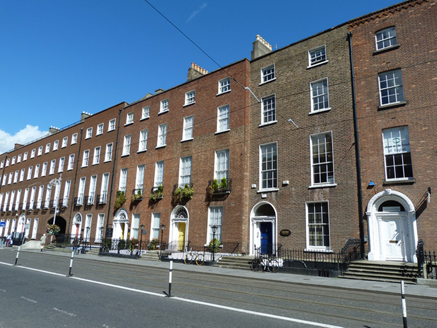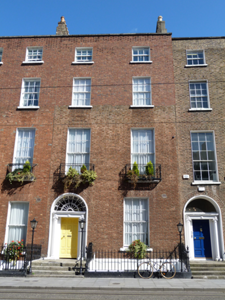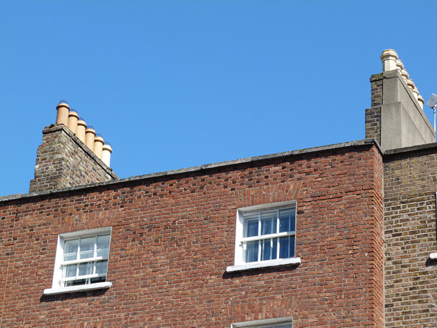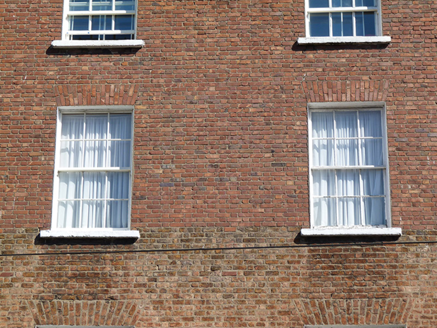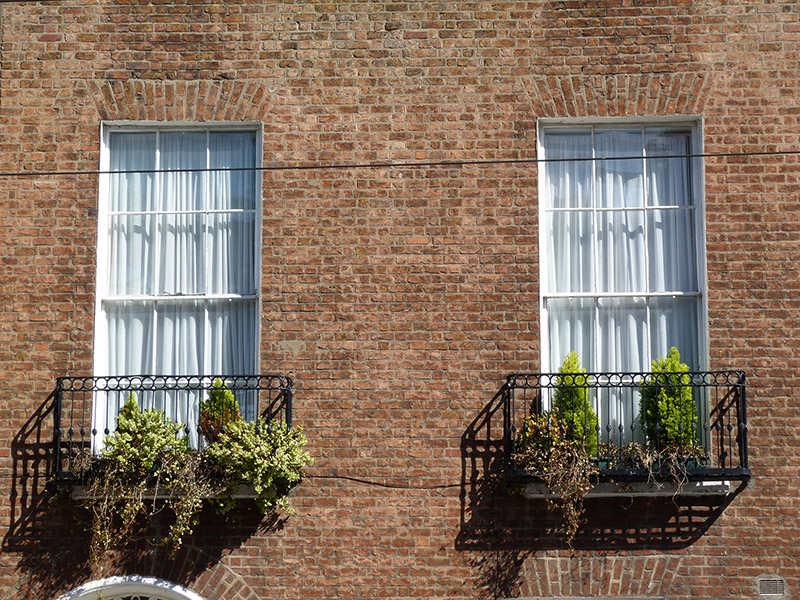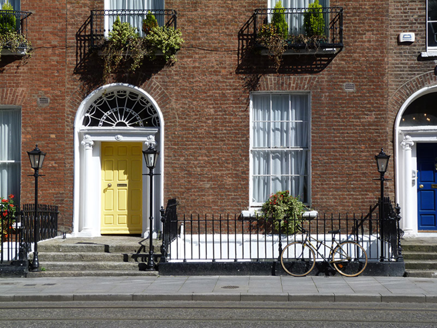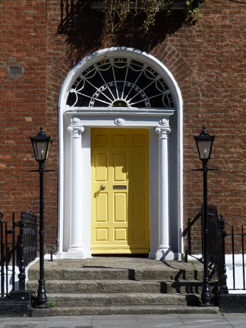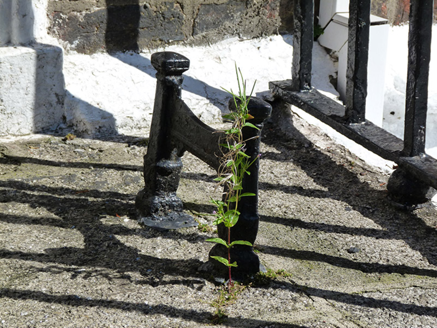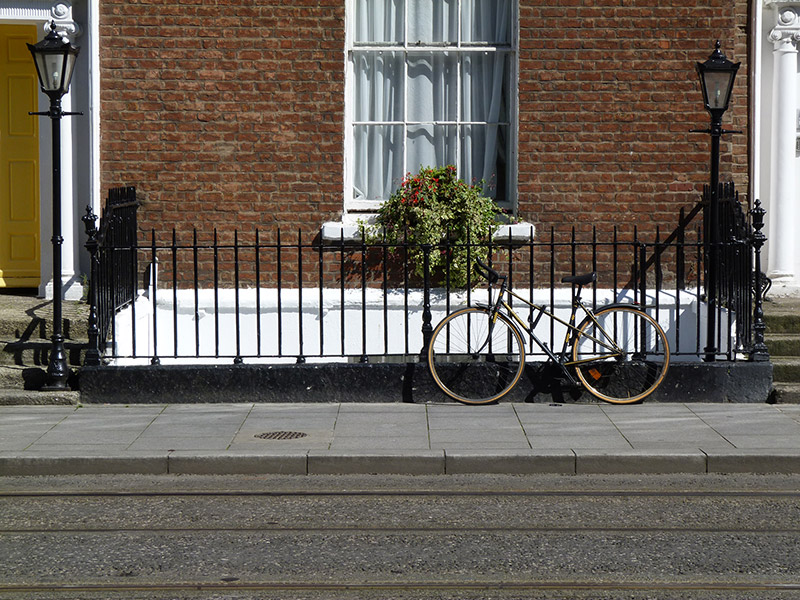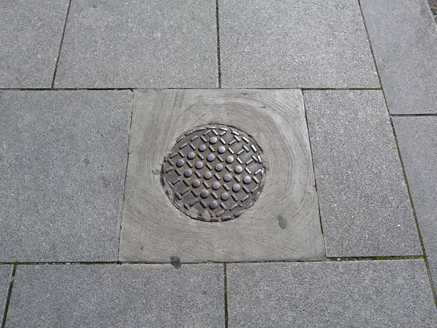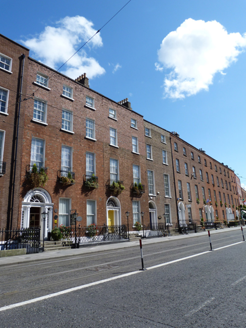Survey Data
Reg No
50920250
Rating
Regional
Categories of Special Interest
Architectural, Artistic, Social
Original Use
House
In Use As
Hotel
Date
1790 - 1810
Coordinates
315762, 233015
Date Recorded
03/09/2015
Date Updated
--/--/--
Description
Terraced double-pile two-bay four-storey over basement former townhouse, built c. 1800, with two-storey return to rear (east) elevation. Now in use as hotel. M-profile pitched slate roof, hipped to rear span, hidden behind refaced brick parapet with granite coping, brick chimneystacks with yellow clay pots to north and south party walls. Red brick walls laid in Flemish bond, refaced on upper two floors in machine made bricks, masonry plinth course over rendered walls to basement to front (west) elevation. Rendered walls to rear (east) elevation. Square-headed window openings with brick voussoirs, masonry sills and rendered reveals, cast-iron balconettes to first floor. Rendered surrounds to rear and basement openings, having iron grilles affixed to basement. Six-over-six sliding timber sashes, with horns to second floor, three-over-three to third floor with horns. Some recent casements to rear, round-headed multi-paned window to north-bay. Round-headed door opening having moulded linings, engaged Ionic columns supporting fluted frieze with paterae and cornice, cobwebbed fanlight and twelve-panelled timber door with brass furniture. Granite entrance platform with cast-iron boot scrapers and granite steps flanked by cast-iron railings with decorative corner posts on granite plinth, enclosing basement area to south. Cast-iron coal hole cover to pavement to front and cast-iron lamp standards on granite steps. Street-fronted, located on east side of Harcourt Street.
Appraisal
Though altered for use as a hotel, this former townhouse positively contributes to the historic character of the streetscape, which is dominated by late-Georgian and early-Victorian townhouses. The restrained façade is enriched with balconettes, and the classically-detailed doorcase features an ornate cobwebbed fanlight and slender Ionic columns, which exhibit the artistic refinement typical of the period. Harcourt Street was opened 1777 by John Hatch, barrister and Seneschal of the Manor of St. Sepulchre. Development was sporadic until the late 1790s when Messrs Hatch, Wade and Whitten obtained approval from the Wide Street Commissioners for the further development of the street.
